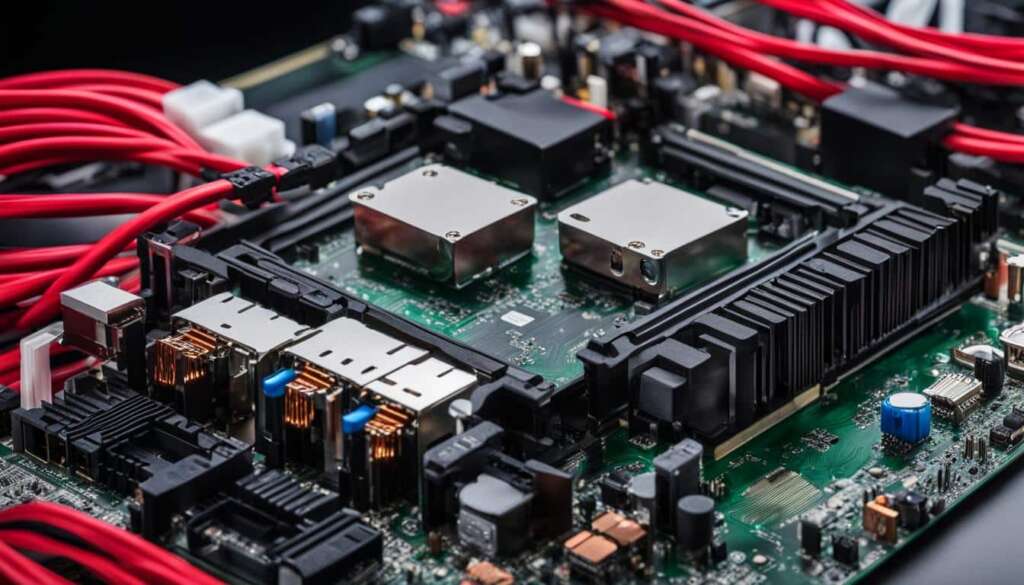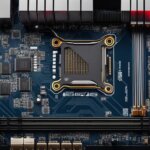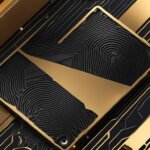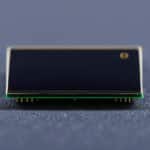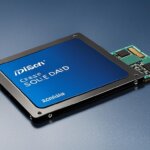Table of Contents
If you’re a computer user, you’ve probably come across the acronym “SATA.” But what is SATA in computers, and why is it important? In simple terms, SATA stands for Serial Advanced Technology Attachment. It is a common interface used to connect storage devices such as hard drives and solid-state drives (SSDs) to a computer’s motherboard.
SATA has revolutionized computer storage, enabling faster data transfer speeds and providing enhanced storage performance capabilities. It is a crucial aspect of any computer setup, playing a significant role in the processing and storage of data.
Key Takeaways:
- SATA stands for Serial Advanced Technology Attachment.
- SATA enables faster data transfer speeds and provides enhanced storage performance capabilities.
- SATA is a crucial aspect of any computer setup, playing a significant role in the processing and storage of data.
- SATA is compatible with various storage devices such as hard drives and SSDs.
- Understanding SATA in computers is crucial for optimizing storage and data transfer speeds.
What is SATA and How Does it Work?
SATA or Serial ATA is an interface used in computer hardware to connect and communicate with storage devices. It functions by transmitting data between the host system and the storage device through a cable. SATA is a popular choice in modern computing systems due to its high data transmission speeds that support fast file transfers and improved system performance.
SATA supports various storage devices such as hard disk drives (HDD), solid-state drives (SSD), and optical drives, making it a versatile choice for different types of computer hardware. Additionally, SATA’s compatibility with different storage devices enables users to upgrade their storage systems with ease, without having to worry about compatibility issues or adjusting their hardware configurations.
SATA also provides users with improved data transmission speeds and higher bandwidth compared to its predecessor, parallel ATA (PATA). With SATA, users can transfer data at speeds of up to 6 gigabits per second, making it a preferred choice for users who require faster data transfer speeds.
How Does SATA Work?
SATA works by transmitting data between the host system and storage devices in a serial manner. When data is transferred, it is broken down into smaller amounts and transmitted one bit at a time. This method of data transmission allows SATA to maintain a consistent flow of data, which results in faster and more efficient file transfers. SATA controllers manage the flow of data between the host system and the storage devices, ensuring that data is transferred accurately and efficiently.
The use of SATA in computer hardware has revolutionized the way we store and transfer data. Its compatibility with various storage devices and high data transmission speeds make it a reliable and efficient choice for modern computing systems.
Benefits of SATA in Computers
SATA technology provides several advantages for computer users. One of the key benefits of SATA is enhanced storage capabilities that allow for larger amounts of data to be stored on a single device. This is particularly beneficial for users who work with large files, such as video and graphics files, which require a considerable amount of storage space. (SATA benefits)
In addition to enhanced storage, SATA also offers faster data transfer speeds compared to its predecessors. This results in quicker data transfer times, improving overall system performance. The faster data transfer speeds also mean that users can access and store data more efficiently, increasing their productivity. (faster data transfer)
Another benefit of SATA technology is its compatibility with a variety of devices, including computers, storage drives, and other peripherals. This makes it an ideal choice for those who require versatility and flexibility in their computing needs. Moreover, SATA devices are backwards compatible, allowing them to work with older technology. (compatibility)
SATA technology is also highly scalable, allowing users to upgrade or replace components with ease. This flexibility provides users with long-term benefits, as they can adapt their system to meet their changing needs over time. As a result, SATA technology is becoming increasingly popular in the modern computing landscape. (enhanced storage)
| SATA Benefits | Explanation |
|---|---|
| Enhanced storage capabilities | Allows for larger amounts of data to be stored on a single device |
| Faster data transfer speeds | Improves overall system performance and increases productivity |
| Compatibility | Works with a variety of devices, including older technology |
| Flexibility and scalability | Easily upgradable and adaptable to meet changing needs |
Overall, SATA technology is an excellent choice for users seeking enhanced storage capabilities, faster data transfer, and versatility in their computing needs. As a result, it has become a widely adopted technology in the computing industry. (SATA conclusion)
https://www.youtube.com/watch?v=SSs4JNHyj8Y
Better Understanding of SATA Technology is Crucial for Optimal Computing
As we reach the end of this article, it is clear that having a better understanding of SATA technology is essential in achieving optimal computing performance. SATA is an essential component in modern computer systems, allowing for enhanced storage and faster data transfer speeds. By utilizing SATA, users can benefit from increased compatibility and scalability, making it the preferred choice for data-intensive applications.
In conclusion, it is vital to recognize the importance of SATA in computers and the role it plays in modern computer hardware. By implementing SATA technology, users can optimize their computing experience, resulting in better performance, enhanced storage, and faster data transfer speeds. Therefore, it is highly recommended to consider SATA when upgrading or building a new computer system.
Overall, it can be concluded that SATA is not just a storage interface; it is a vital technology that is essential in achieving optimal computing performance. Hence, having a thorough understanding of SATA technology is crucial for any computer user or enthusiast.
FAQ
What is SATA?
SATA, which stands for Serial ATA, is a computer hardware interface that allows for the transmission of data between storage devices and the computer system. It is a standard connection used for connecting hard drives, solid-state drives, and other storage devices to the motherboard.
How does SATA work?
SATA works by using a serial communication protocol to transfer data between the computer’s motherboard and the storage devices. It uses a dedicated cable with thin, point-to-point connectors to transmit data in a serial manner, as opposed to parallel transmission used by its predecessor, the IDE interface. SATA interfaces have evolved over time, with newer versions offering faster data transfer speeds and improved features.
What are the benefits of SATA in computers?
SATA offers several benefits in computers. Firstly, it enables enhanced storage capabilities by providing a reliable and efficient connection between the storage devices and the computer system. Secondly, SATA provides faster data transfer speeds, allowing for quicker access to stored data and improved overall system performance. Additionally, SATA offers compatibility with various storage devices, making it versatile and suitable for a wide range of computing needs. Overall, SATA technology provides flexibility, scalability, and improved efficiency in modern computer systems.
Is SATA the only type of interface for storage devices?
No, SATA is not the only type of interface for storage devices. There are other interfaces such as PATA (Parallel ATA) and SCSI (Small Computer System Interface). However, SATA has become the dominant interface in modern computers due to its advantages over previous technologies. It offers higher data transfer speeds, better compatibility, and improved efficiency compared to older interfaces. SATA has gradually replaced the older PATA interface, also known as IDE, in most computers.
Can SATA be used with different types of storage devices?
Yes, SATA can be used with different types of storage devices. It is commonly used with hard disk drives (HDDs), solid-state drives (SSDs), and optical drives. SATA interfaces are designed to be versatile and compatible with a wide range of storage devices, making it a widely adopted standard in the computer industry.

